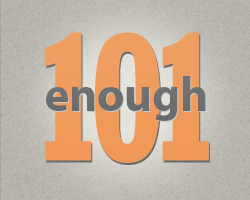
Editor’s Note: This post is a brief history, intended to provide a contextual background for understanding the complex issues that the Enough Project works on. It is part of the series Enough 101.
Acronyms to Know:
SPLM/A – Sudan People’s Liberation Movement/Army
GOS – Government of Sudan
SSLM – Southern Sudan Liberation Movement
Independence: 1956
On January 1, 1956, Sudan gained independence from the Anglo-Egyptian Condominium, the joint British and Egyptian government that administrated Sudan. At the time, the new country was 1/3 the size of the contiguous U.S. and hosted about 600 ethnic groups speaking over 400 languages.
The north was (and continues to be) predominately Muslim, while the southern regions are mostly Christian and animist. From 1930 to 1953 the Anglo-Egyptian Condominium governed northern and southern Sudan separately.
The 1956 constitution did not address two crucial issues that continue to incite conflict: whether Sudan should be a secular or Islamist state, and the country’s federal structure. The Arab-led government of Sudan, or GOS, based in the capital of Khartoum reneged on promises to southerners to create a federal system, which led to a mutiny by southern army officers that launched the first of Sudan’s two north-south civil wars.
First Civil War: 1955-1972
In the first civil war, from 1955 to 1972, southern insurgents, called the Anya Nya, fought against GOS for greater autonomy. By 1969, Anya Nya controlled most of southern Sudan. In 1971, the rebel group integrated into the Southern Sudan Liberation Movement, or SSLM, the precursor to today’s Sudan People’s Liberation Movement/Army, or SPLM/A.
The war ended with the 1972 Addis Ababa Agreement between SSLM and GOS, which granted significant regional autonomy to southern Sudan on internal issues, and also promised the Abyei area, located on the north-south border, the right to hold a referendum to determine whether they would remain a part of northern Sudan or join the newly formed Southern Region.
Second Civil War: 1983-2005
The second civil war erupted in 1983 when President Jaafar Nimeiri introduced Sharia Law and reneged on the Addis Ababa Agreement’s provisions for a referendum in Abyei. The SPLM/A fought against GOS until 1989, when the parties reached a peace agreement and suspended Sharia Law.
However, on June 30, 1989 a military coup led by Omar Al-Bashir overthrew the Sudanese government and repudiated the peace agreement.
The Second Civil War left two and a half million people dead and four million people displaced between 1983 and 2005.
The SPLA’s political arm is also known as the Sudan People Liberation Movement, or SPLM. The group is often referred to as the SPLM/A.
Through the 1990s, attempts to draft peace agreements saw varying degrees of success, but the splintered nature of the conflict and large region posed a constant problem. For example, 1997’s “Peace from Within” movement included Khartoum, Nuba Mountains, and Fashoda agreements, but ended when the government clashed with other uninvolved rebel factions.
For years, GOS used aerial bombardments and helicopter gunships to attack the southern Sudanese civilian population.
In 1999, there were 65 confirmed aerial bombings of civilians in southern Sudan. The number of attacks more than doubled in 2000 to 132, and tripled in 2001 to 195 confirmed bombings.
Most of these attacks occurred in the Bahr el Ghazal, Eastern Equatoria, Southern Blue Nile, and Upper Nile regions.
The GOS also consistently restricted humanitarian aid and media access to the areas subjected to bombardment.
The second civil war came to an end with the signing of the Comprehensive Peace Agreement in 2005.
For more on Sudan's history, read: "Sudan: Comprehensive Peace Agreement and South Sudan Independence."
For more information and to see the sources used in this post, check out the Enough Project's Sudan Pinterest Board.

